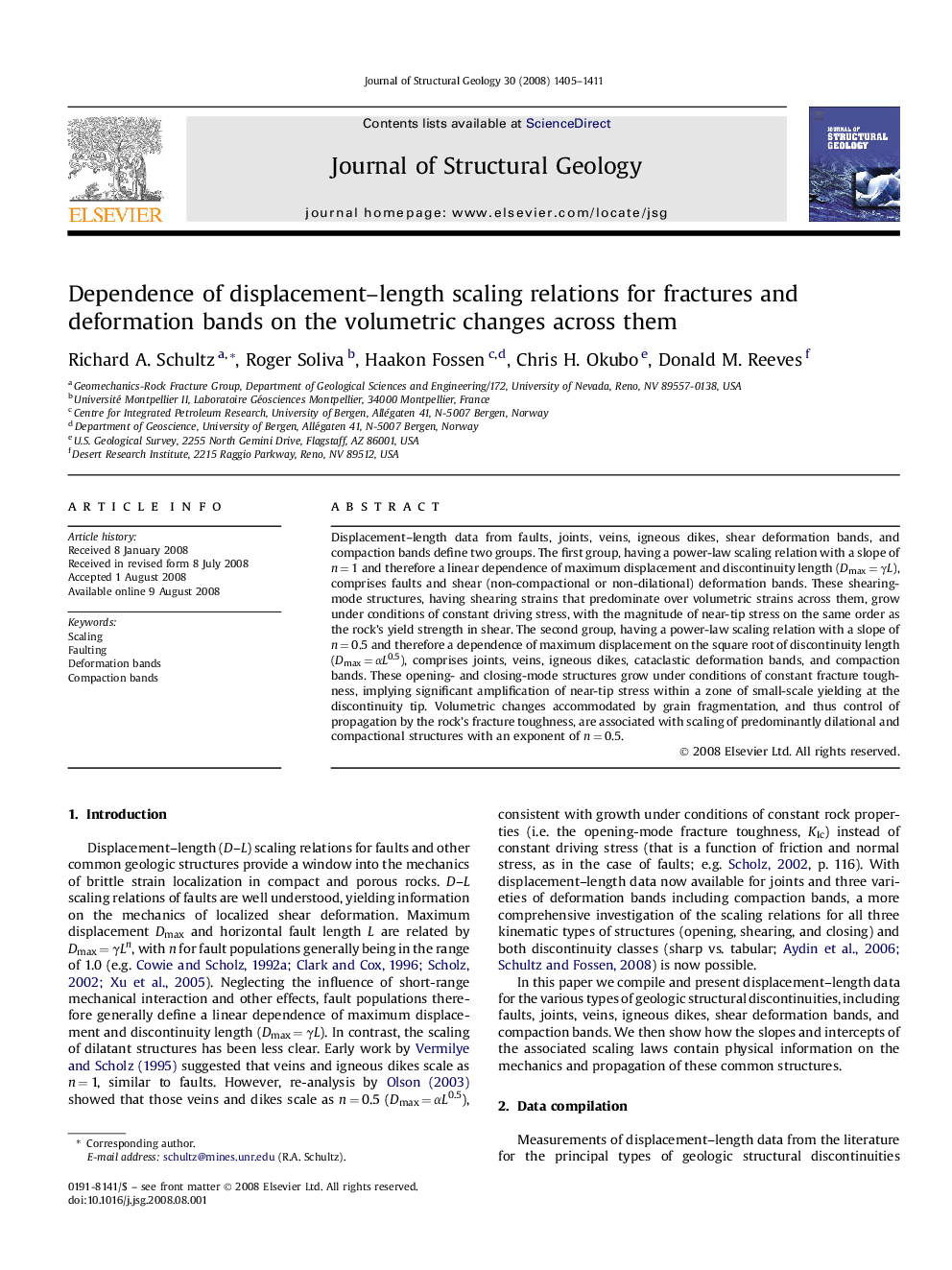| Article ID | Journal | Published Year | Pages | File Type |
|---|---|---|---|---|
| 4734022 | Journal of Structural Geology | 2008 | 7 Pages |
Displacement–length data from faults, joints, veins, igneous dikes, shear deformation bands, and compaction bands define two groups. The first group, having a power-law scaling relation with a slope of n = 1 and therefore a linear dependence of maximum displacement and discontinuity length (Dmax = γL), comprises faults and shear (non-compactional or non-dilational) deformation bands. These shearing-mode structures, having shearing strains that predominate over volumetric strains across them, grow under conditions of constant driving stress, with the magnitude of near-tip stress on the same order as the rock's yield strength in shear. The second group, having a power-law scaling relation with a slope of n = 0.5 and therefore a dependence of maximum displacement on the square root of discontinuity length (Dmax = αL0.5), comprises joints, veins, igneous dikes, cataclastic deformation bands, and compaction bands. These opening- and closing-mode structures grow under conditions of constant fracture toughness, implying significant amplification of near-tip stress within a zone of small-scale yielding at the discontinuity tip. Volumetric changes accommodated by grain fragmentation, and thus control of propagation by the rock's fracture toughness, are associated with scaling of predominantly dilational and compactional structures with an exponent of n = 0.5.
